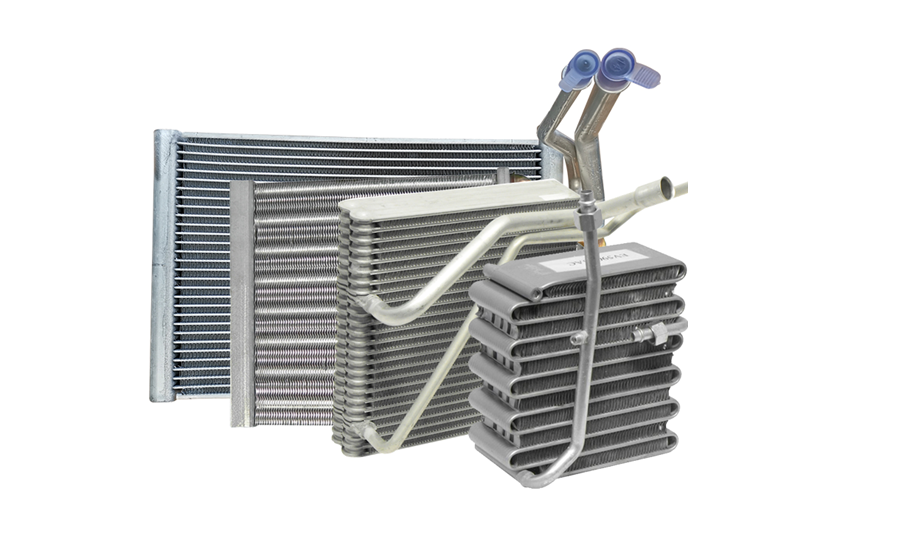What Is Car Air Conditioner Evaporator?

The car evaporator is also a kind of heat exchanger, which is a direct device to obtain cold air in the refrigeration cycle. Its shape is similar to that of a condenser, but it is narrower, smaller and thicker than the condenser. The evaporator is installed behind the instrument panel of the cab. Its structure and installation in the refrigeration system are mainly composed of pipes and radiating fins. There are also water trays and drain pipes under the evaporator.
1. The role of the evaporator
The role of the evaporator is opposite to that of the condenser. The refrigerant has a heat-absorbing effect, and the air flowing through the evaporator is cooled. When the refrigeration system is working, the high-pressure liquid refrigerant expands through the expansion valve, and the pressure decreases, turning into a wet vapor into the evaporation The core tube of the device absorbs the heat from the heat sink and the surrounding air. When the evaporator is working, as the relative humidity of the air decreases, the excess water in the air will gradually condense into water droplets, gather together, and drain out of the car through the water outlet pipe. In addition, in order to save energy, the air of the blower comes from the cabin, and the low-temperature air that has been cooled by the evaporator is sent to the cabin again after cooling (internal circulation mode is used when the air conditioner is working). It has the effect of cooling down, but also dehumidification.
2. Requirements for the evaporator
Due to the limited space of the evaporator (component that directly generates cold or warm air) in the car, the evaporator is required to have the characteristics of high cooling efficiency, small size, and light weight. For ac systems that use expansion valves, the evaporator outlet superheat is controlled by the expansion valve. For systems that use a fixed throttling tube, the gas-liquid separator behind the evaporator ensures that the compressor must suck in gas.
3. The working process of the refrigerant in the evaporator
In a system using an expansion valve, the refrigerant’s working process in the evaporator is divided into two stages. The first stage is that the liquid refrigerant boils and vaporizes after absorbing heat to become a saturated gas. In this stage, the latent heat changes, and the pressure and temperature are basically unchanged. The second stage is that the refrigerant continues to absorb heat, and the temperature rises to become a superheated gas, which is a sensible heat change. The degree of refrigerant temperature rise is the degree of superheat. The purpose of the outlet of the evaporator must have a certain degree of superheat, which is to ensure that the compressor sucks in gaseous refrigerant so that no liquid hammer will occur in the compressor.
For systems that use expansion valves, the superheat of the evaporator is controlled by the expansion valve. For systems that use throttling pipes, the collection dryer behind the evaporator is used to ensure that the compressor sucks in gaseous refrigerant.




